Updated at September 24, 10:13 p.m. (GMT +8): Updated information on Elder Dragon
League of Legends players have waited almost ten years for the release of Wild Rift. This guide is for existing League of Legends players who want to dive into the game and get a head start on all the differences between its mobile and PC version.
Last year, during Riot Games’ tenth anniversary celebrations, League of Legends: Wild Rift was finally announced among a slew of other games. Alpha testing lasted a month in June 2020 in the Philippines, and now Beta testing is live in Southeast Asia, before its planned full release by the end of 2020.
Since Wild Rift is completely based on League of Legends, players will find it very easy to pick up. However, there are some key differences that you’ll need to take note of.
Most champions are identical, but with slight differences
In Riot’s dev diary video released back in March 2020, they highlighted that most champions will play and feel identical to their PC counterpart.
Vayne’s Silver Bolts (W) for example, is a passive skill in League of Legends. In Wild Rift, it has an added active that increases her attack speed for a short period of time and heals her. Vayne and ADC mains will need to get used to activating it in-game, or you won’t be dealing maximum damage.
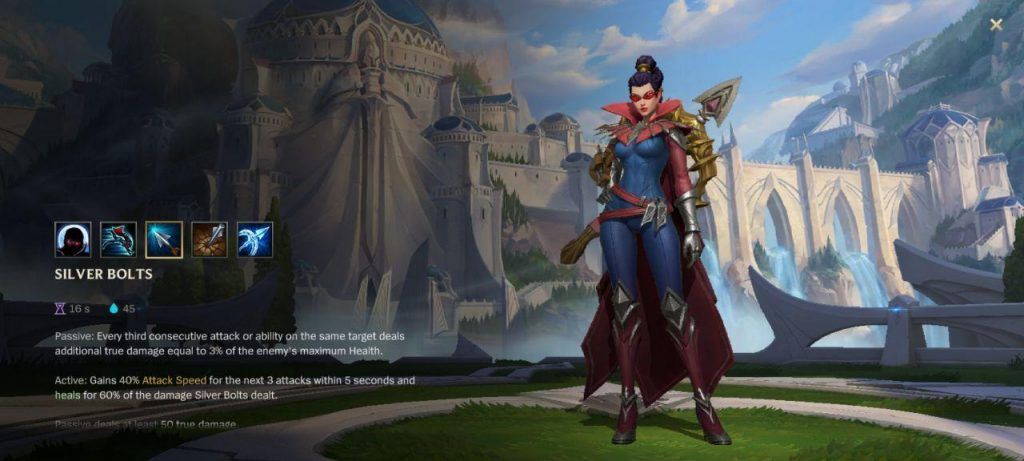
Ashe’s ultimate, Enchanted Crystal Arrow (R), can be controlled when shot. So instead of travelling in a straight line, the camera will focus on her arrow as you guide it to your desired target in a series of twists and turns across the map.
Miss Fortune’s Double Up (Q) on PC requires a visible target. In Wild Rift, it is a skill shot, and will hit if it lines up with a target.
Final Spark, Lux’s global ultimate, is global in Wild Rift, which has been extended from her 3,400 range ultimate in League of Legends.
The jungle pool has been adjusted
In the spirit of having more diversity in each role, Vayne has officially been categorized as a jungler in Wild Rift, alongside Jax. She has recommended builds for Jungle and as a Duelist Marksman.
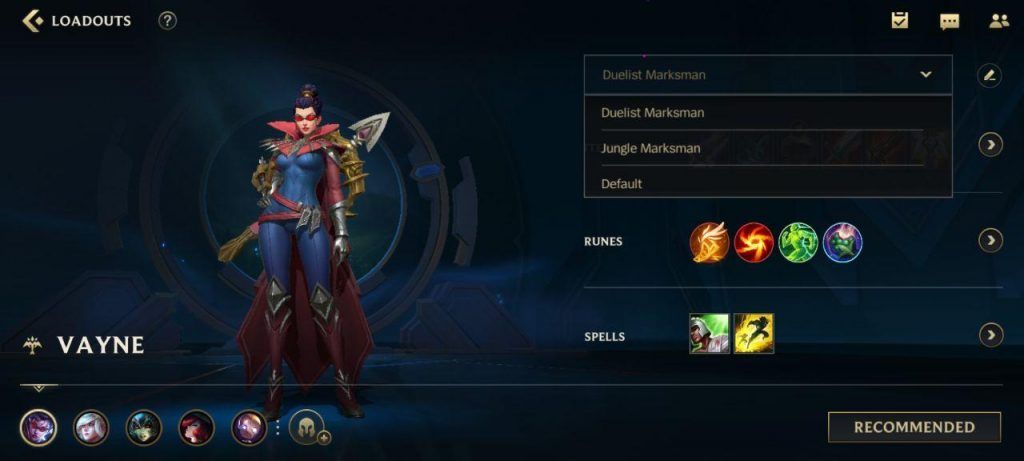
From the games we’ve played, leashing is also not a requirement, so it’s possible for junglers to execute their own clear.
For now in Closed Beta, 42 champions have been ported over to Wild Rift, with more to come in the future. There’s also the possibility of Riot designing champions that are exclusive to the game.
It’s Wild Rift, not Summoner’s Rift
Wild Rift is a smaller map, which equates to faster rotations and faster gameplay on mobile. The time taken to walk into lane, recall, and the cooldowns of Summoner Spells are reduced. Flash for example, has a 3-minute cool down compared to five minutes in LoL.
As much as LoL players instinctively know how long it takes for the mid laner to walk to bot lane for a gank, it happens much faster on Wild Rift, and the change of pace may surprise you.
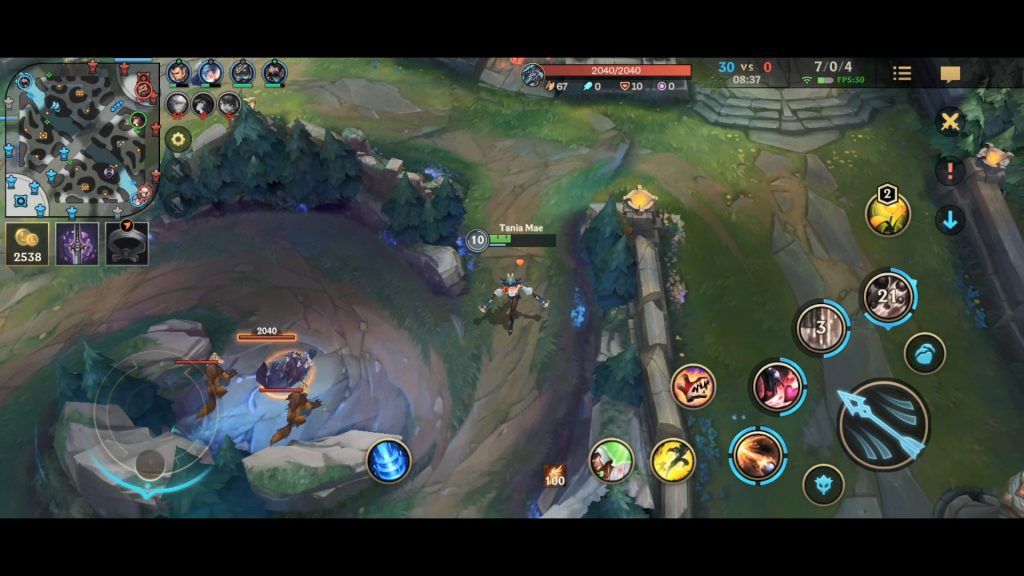
You’ll further notice that there are gaps in the walls of the jungle that facilitate movement. One example is at Wolves, which you can directly access the camp from both sides.
Your perspective is mirrored
Before the game starts, you can click on the role you intend to play during champion select. Upon loading, there will be arrows and text on the ground to guide you to your designated lane.
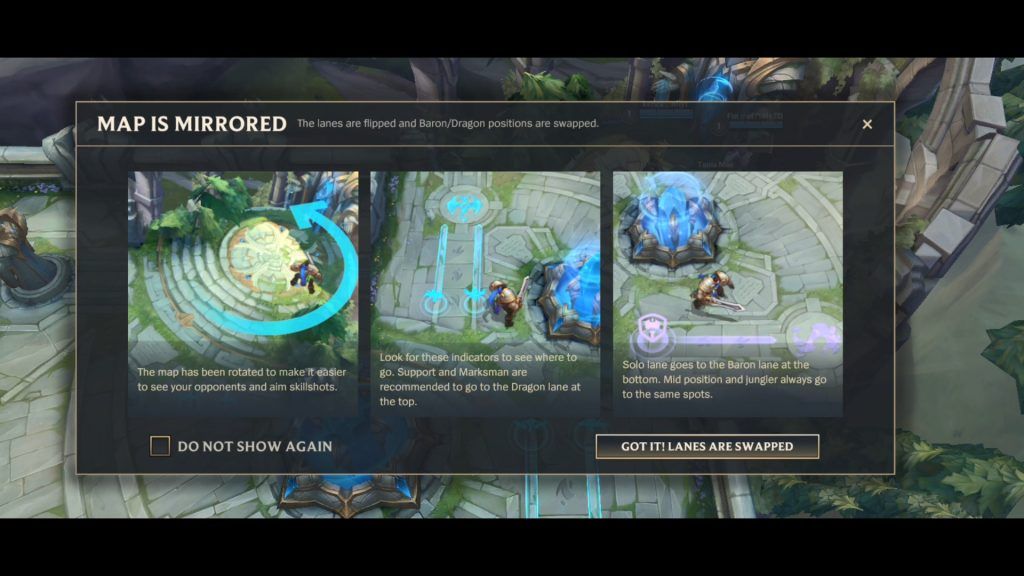
A reminder will pop up to tell you that the map is mirrored. This means that blue team plays from the default perspective, while the red team experiences a camera shift at spawn, as shown in the screenshot above.
Bot lane is called the Dragon Lane
Since everything is mirrored, your duo lane walks to top, while the solo (top lane in LoL) is on the bottom side of the map. Remember, the entire map is mirrored, so the duo lane continues to be near the dragon and red buff, while the solo lane is by Baron pit and blue buff.

Due to the changes in perspective, it’s confusing to call duo lane the “bot lane” as we do in League of Legends. As such, Riot has renamed it the “Dragon Lane” — the lane closest to the dragon pit.
Dragons are slightly different
Drakes in Wild Rift retain their four elements, but to keep the games short, each element is only allowed to spawn once. Their effects remain the same, with very slight differences: Ocean drake grants lifesteal, while Infernal gives an 8% boost to offense.
Once three elemental dragons are downed, the Elder Dragon will spawn. It takes on the element that has not appeared in the game.
- These are the minimum Android and iOS specs you need to play Wild Rift
- Everything you should know before you start playing Wild Rift
Get used to the micro controls
When it comes to the practicalities of playing Wild Rift, one key feature that sets it apart from other mobile MOBAs is the amount of micro controls at your disposal.

Your auto-attack button can be dragged out, which allows you to lock onto different targets like specific minions, monsters, and heroes. You can also turn on the enemy champion portrait lock option for added accuracy.
As with other mobile MOBAs, the button above auto attack will make your champion focus solely on hitting the turret, and the one below on minions. It takes a while to get used to the different ways of targeting, which replaces your right and left click on PC.
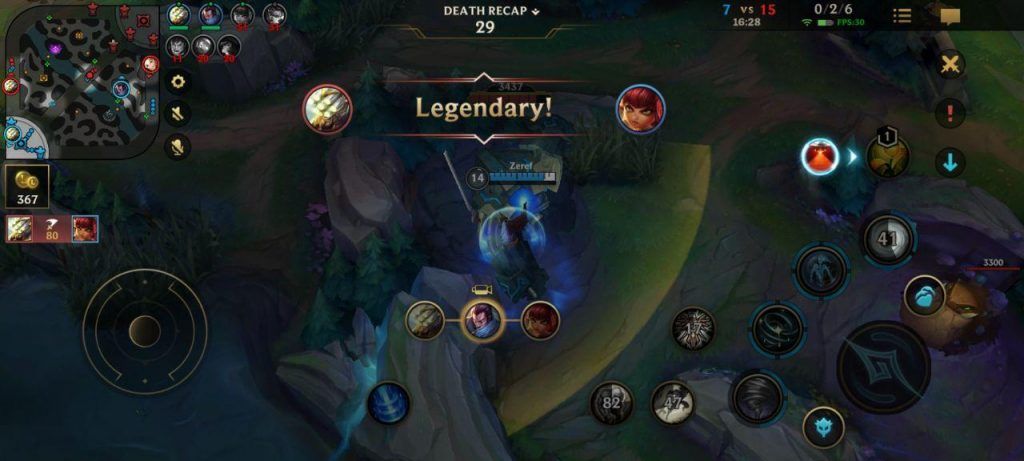
If you’re near an enemy champion and you press a spell, it will automatically shoot at the enemy’s last position at that time you casted it. While this is convenient, it’s certainly not accurate.
To aim your skill shots with utmost accuracy, you’re going have to drag, look at the outline of the projectile, aim, then let go. This is similar to how you would manual cast spells in League. If you drag the spell’s button out to its maximum range, it will automatically snap at the edge, as Nami’s Aqua Prison illustrates.

You can either drag a spell out gradually, in which Aqua Prison’s outline will emerge from the center of Nami, or you can snap the outline at maximum range then reposition from there.
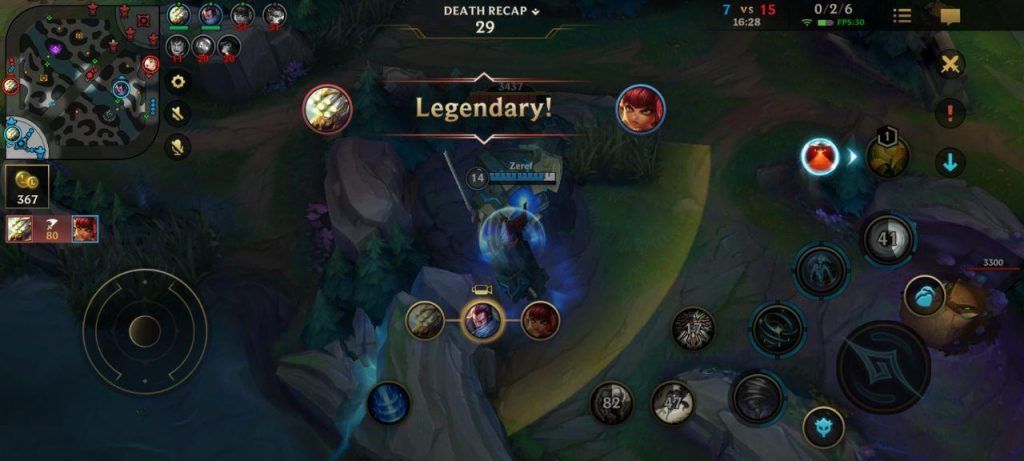
When you’re not alive on the Rift, you’ll get to spectate the map upon death like in LoL. You can immediately check out what your teammates are doing by clicking their portraits in the middle.
Pick four runes
There are less rune options in Wild Rift compared to LoL. There are only eight Keystone Runes at the moment: Electrocute, Aery, Conqueror, Fleet Footwork, Grasp of the Undying, Aftershock, Front of Life, and Kleptomancy.
The rune system is slightly different too. Instead of selecting two trees, you get three secondary runes classified as Domination, Resolve, and Inspiration. Within each type, you select one.

You’ll notice that some runes in LoL have been reclassified, like Gathering Storm. There are also new runes like Pack Hunter under the Inspiration tree which grants you bonus movement speed when near allies, and more gold when both of you participate in a takedown.
Take note of Wild Rift exclusive items
First off, you’ll need to get used to the classification of items. There are only four categories when you open the shop: Physical, Magic, Defense, and Boots. Within each, there are three subcategories called Basic (lowest tier item components), Mid Tier, and Upgraded (full items).

Most core items, their names, and their stats will be familiar to you, some of which adorn new icons. New items, such as Harmonic Echo, Awakened Soulstealer, and Infinity Orb, have a combination of effects that you’ll want to experiment in your builds.
Lastly, a key thing to note is that you can’t buy Vision Wards in Wild Rift. Only sweepers lens and the Scryer’s Bloom plant can clear vision.
Boots can be upgraded twice, and there are limited Summoner Spells
One of the highlights of Wild Rift’s item system is learning that boots can be upgraded twice, which is why it has its own category on the side bar. The second upgrade gives you an equivalent item in LoL.
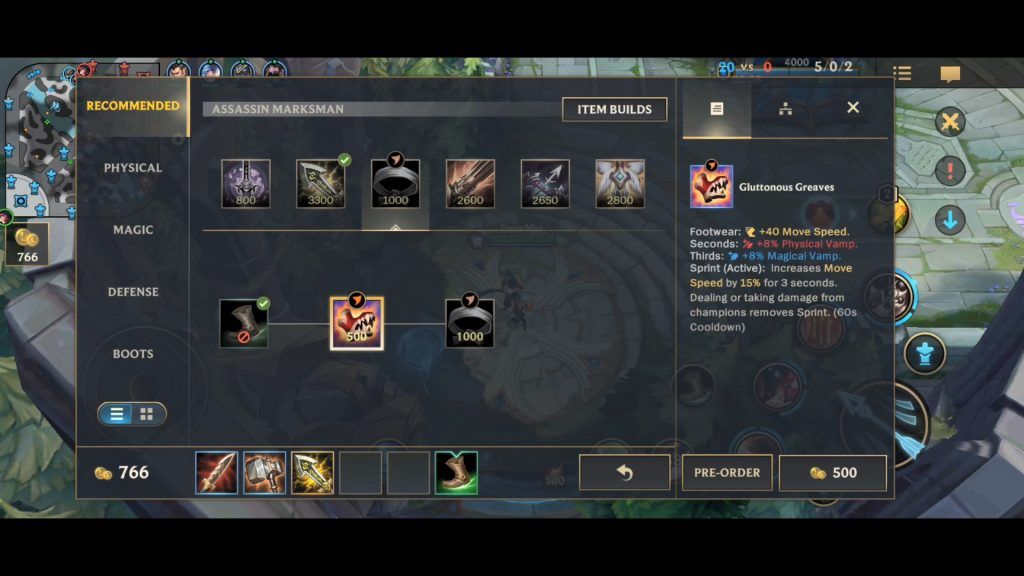
Second tier upgrades are: Stasis (Zhonya’s), Locket (Locket of the Iron Solari), Glory (Righteous Glory), Protobelt (Hextech Protobelt-01), Quicksilver (Quicksilver Sash), Stoneplate (Gargoyle’s Stoneplate), Redemption, Shadows (Twin Shadows), and Teleport.

For supports, this means that it’s impossible to buy Redemption and Locket together; you’ll need to choose one or the other in Wild Rift.
The boot’s Teleport upgrade is the equivalent of the Summoner Spell in League of Legends. Only seven Summoner Spells are currently in Wild Rift: Ghost, Heal, Barrier, Exhaust, Flash, Ignite and Smite.
You are awarded medals at the end of each game
Besides being awarded an S-rank or A-rank like in LoL, there are other medals to mark your achievements every game. Medals like “Jungle Domination” or “Exceeding Expectations” will appear at the end screen, win or lose.

The end-game screen with the usual statistics have added symbols to mark achievements. Most of these metrics are already present in LoL, with the exception of “MVP” and “SVP” that honors the best performing player on the winning and losing team.
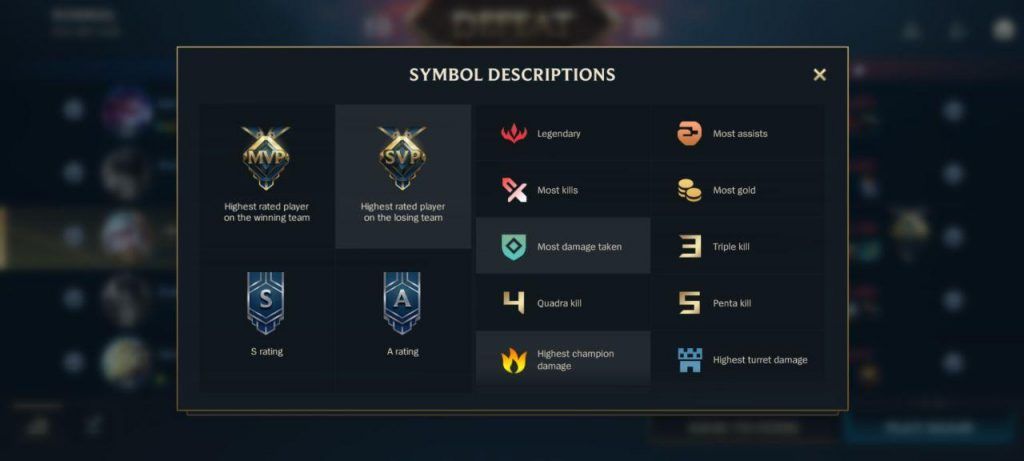
The ranked ladder has an extra tier
You can start ranking once you hit level ten and you own ten or more champions. All tiers remain the same as LoL, with the addition of Emerald that sits in between Platinum and Diamond.
In total, there are ten tiers. Like LoL, all the tiers are split into four divisions, with the final three tiers having a single division.

Expect provisional matches and promotional series in between ranks. There’s an additional new system called Ranked Fortitude. It is awarded at the end of each ranked match, win or lose.
When a certain number of Fortitude points have been collected, a mark-loss protection will be enabled. When this safeguarding mechanic is active, the next defeat in a ranked match will not deduct any marks.
Style on your opponents like never before
Besides custom recalls, Rift Emblems, and emotes, the coolest cosmetic item in Wild Rift has to be Baubles. Think of them like Valorant’s post-round stickers.
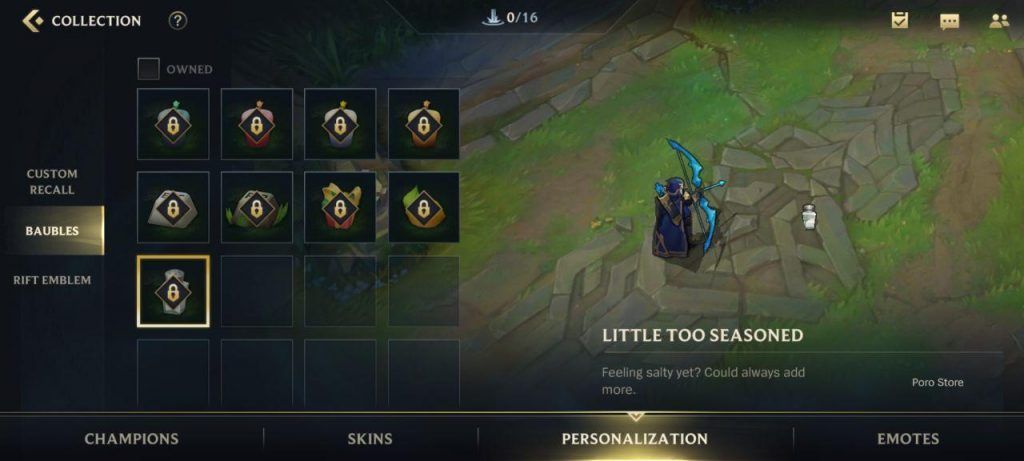
After killing an enemy, you can drop a Bauble on them to really drive the message home. We especially like this one with the classic salt shaker.
With that, you’re all set to conquer League of Legends mobile. What are you waiting for Summoners? It’s time to enter the Wild Rift!
READ MORE: 5 Wild Rift champions that play just like your other MOBA mains

